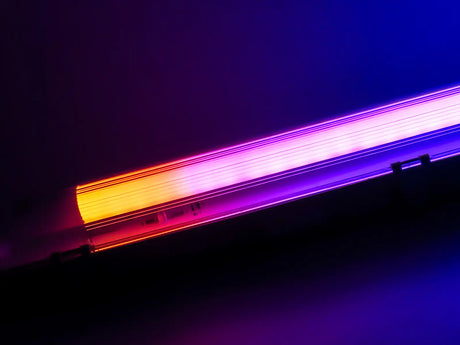What is UGR?
UGR stands for "Unified Glare Rating" and it is a measure used to assess the glare experienced by people looking at a lit environment, such as an office, classroom or public space. It is especially relevant when designing lighting systems to provide comfortable and visually pleasing light.
UGR takes into account several factors, such as the position and brightness of light sources, the reflection of light on surfaces and the observer's viewing direction. The result is a numerical value that indicates how disruptive glare can be.
What UGR values are there?
UGR values range from 10 to 30, with a lower value indicating less glare and a higher value indicating more glare. A UGR value of 19 or lower is considered comfortable for most indoor environments, while values above 22 can be perceived as glare.
The different UGR values and their meaning are explained below
UGR < 16
A UGR value lower than 16 is considered excellent and provides very high visual comfort. In environments where precision and concentrated work are required, such as offices, laboratories or reading rooms, it is ideal to have lighting with a UGR value lower than 16.
UGR 16-19
A UGR value between 16 and 19 is considered good and provides high visual comfort. This level of lighting is suitable for general workplaces, conference rooms and classrooms where visual comfort is important but where precision requirements are less stringent.
UGR 19-22
A UGR value between 19 and 22 is considered acceptable and provides reasonable visual comfort. This level of lighting is suitable for areas such as hallways, stairwells or storage areas, where visual requirements are slightly lower and glare is less critical.
UGR > 22
A UGR value higher than 22 is considered unacceptable because it leads to significant glare and visual discomfort. It is important to avoid lighting with a UGR value higher than 22, especially in work environments where prolonged visual concentration is required.
Microprismatic plate for LED panels for low UGR
A microprismatic plate is an innovative technology specifically designed to lower the Unified Glare Rating (UGR) of LED panels to provide increased visual comfort. This plate consists of small prismatic structures that disperse light evenly and minimize unwanted glare.
How does a microprismatic plate work?
The microprismatic structure of the plate acts as an optical system that effectively controls and scatters the light emitted by the LEDs. The light emitted by the LEDs is refracted and scattered in different directions by the prismatic structures. This creates a homogeneous and diffuse lighting pattern without distracting glare.
Advantages of a microprismatic plate
- Lowers the UGR value: The microprismatic plate effectively reduces the UGR value of LED panels. This means that visual comfort is increased by minimizing glare and eye fatigue, which is essential in work environments where prolonged visual concentration is required.
- Uniform light distribution: By using the microprismatic plate, light is evenly distributed over the surface of the LED panel. This results in uniform and consistent lighting without dark or bright areas, creating a pleasant and comfortable working environment.
- Maintaining light quality: Unlike some other methods of reducing glare, the microprismatic panel maintains the high light quality of the LED lighting. It provides bright and natural light output without compromising color rendering index (CRI) and overall lighting performance.

